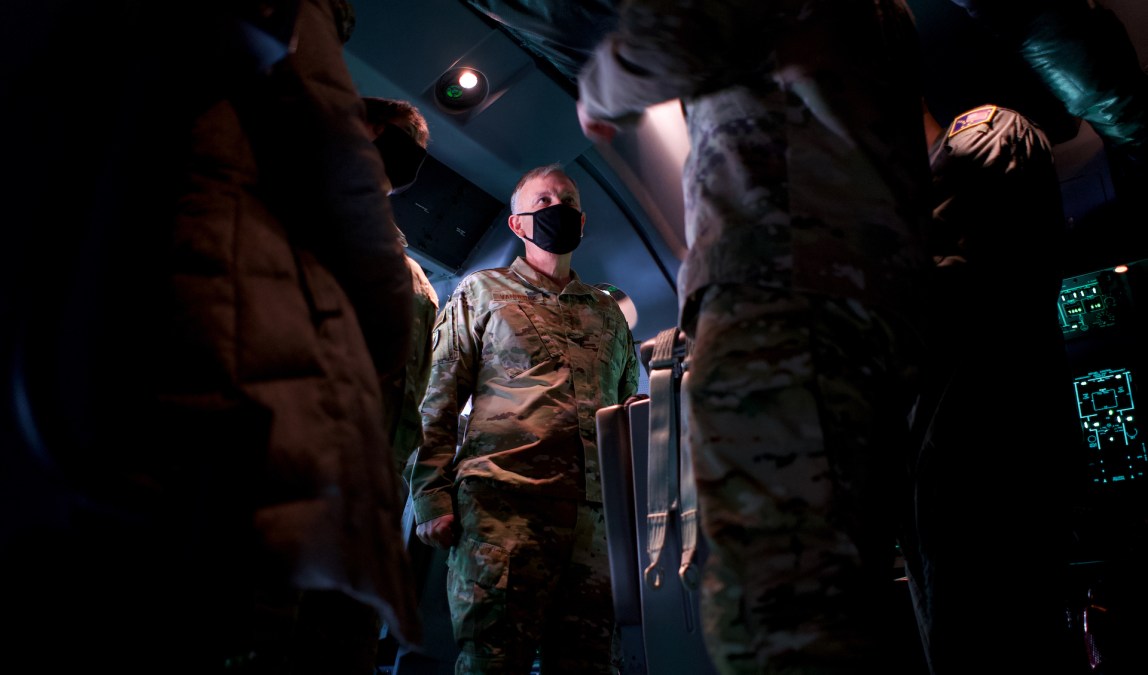Northern Command using data platform to better detect incoming threats

The combatant command in charge of protecting the U.S. homeland has a new weapon in that fight: data.
A recent series of experiments hosted by U.S. Northern Command and the North American Aerospace Defense Command (NORAD) tested the military’s ability to use artificial intelligence to comb through data to detect incoming threats. The tech is aimed at increasing the precision with which the command can detect, and thus protect, against new kinds of missiles that can travel at multiples of the speed of sound, as well as smaller vehicles like drones.
“Data exists; what we are doing is making that data available,” Gen. Glen VanHerck said of the effort, during a press briefing on the Global Information Dominance Experiments (GIDE).
The command already uses lots of data, with analysts poring over sensor information to detect if intercontinental ballistic missiles from North Korea or Russia are headed toward U.S. cities. The experiments tested the command’s ability to use tech and available cloud infrastructure to expand how much data it can use and better integrate with other commands.
The Defense Department has been on a journey to enhance its use of data and artificial intelligence. The data-driven concept of operations behind that is Joint All Domain Command and Control (JADC2), a framework where all data can easily be shared from across air, land, sea, space and cyberspace activities, like a military Internet of Things. AI would be used on top of that to make sense of all the data and produce coordinated options for commanders.
“This is JADC2,” the general declared about the tests, called the Global Information Dominance Experiments (GIDE).
GIDE consisted of three iterations, each with their own focus areas but all broadly testing the ability to share data and use AI in homeland defense. The first GIDE experiment was a tabletop exercise testing how the NORTHCOM would collaborate with other commands if it had AI-enabled early warning systems. The second experiment introduced live tests of data sharing, with the third expanding those experiments and early warning systems.
NORAD and NORTHCOM “leveraged an interoperable data platform that is a cloud-agnostic, meaning the data integration software solution can work on whichever cloud capability is preferred,” a spokesperson told FedScoop in an email.
The experiments used existing infrastructure already in place in DOD. The idea was not to build or buy new tools but to leverage what the command already had available in new ways.
“GIDE’s success relied on existing capabilities used in innovative ways,” the spokesperson said.
The backbone of the tech is both already there and subject to change. The incoming Joint Warfighter Capability Cloud is being rolled out to meet the DOD’s enterprise cloud needs, providing compute and storage all the way out to the tactical edge.
“The GIDE 3 experiment showcased how the software tools designed for cross-combatant command collaboration, assessment, and decision-making can be used to enable more effective global logistics coordination, intelligence sharing and operations planning,” VanHerck said. “By integrating more information from a global network of sensors and sources, using the power of AI and machine-learning techniques to identify the important trends within the data, and making both current and predictive information available to commanders, NORAD and USNORTHCOM are giving leaders around the globe more time to make decisions and choose the best options available, whether in competition, crisis or conflict.”

This story was featured in FedScoop Special Report: Government Powered by Data - A FedScoop Special Report






